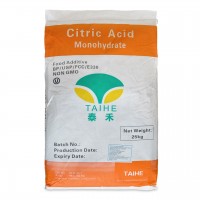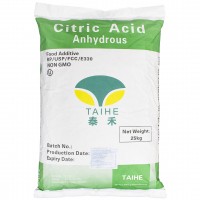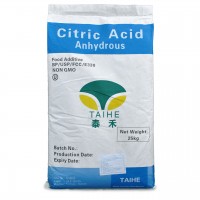Acidity regulators and acidifiers play an important role in food production. They affect the flavour, texture, and shelf life of numerous products and can therefore be found in many everyday food products.
What is an acidity regulator?
Acidity regulators give foods an acidic flavour, improve the effect of preservatives and enhance product stability.
Acidity regulators in food are primarily there to stabilise the pH value. They ensure that the acidity level remains constant, which not only improves the flavour and texture, but can also inhibit the growth of undesirable microorganisms. By stabilising the pH, they can indirectly extend the shelf life of a product. Acidity regulators are therefore essential to improve the sensory profile of a product and make it more appealing to the consumer.
Examples of commonly used acidity regulators:
- Citric Acid (E 330): Commonly used in drinks, confectionery and jams to stabilise pH.
- Trisodium Citrate (E 331): Often used in soft drinks and desserts to balance acidity and improve stability.
- Calcium Citrate (E 333): Used in dairy products, beverages and dietary supplements to regulate pH and as a source of calcium.
- Tartaric Acid (E 334): Used in jams and fruit juices to control pH and improve flavour.
These acidity regulators are widely used in the food industry to control acidity, thereby supporting product quality and shelf life.
What is an acidifier?
Acidifiers in food play an important role by giving products a characteristic, distinctive sour flavour and improving the overall taste experience. They contribute a fresh, natural acidity, particularly in fruit juices and soft drinks, and also support the function of acidity regulators. However, they are primarily used for their flavour, rather than for any stabilising properties.
Examples of commonly used acidifiers:
- Citric Acid (E 330): Popular acidifier in drinks, confectionery and preserves; gives a fresh, sour flavour.
- Tartaric Acid (E 334): Used in fruit juices, jams and baked goods; enhances flavour and stabilises acidity.
- Malic Acid (E 296): Mainly found in fruit gums, soft drinks, and confectionery; it adds a fruity, slightly sour flavour.
These acidifiers are used in a variety of ways to give foods the desired acidic flavour and to emphasise freshness.
Differences between acidity regulators and acidifiers
Although both types of substances are related to acidity, acidity regulators and acidulants have different functions. An acidity regulator is used to stabilise the pH value, while an acidifier specifically emphasises the sour taste. Acidity regulators are therefore primarily used to regulate acidity, while acidifiers have a direct flavouring effect.
Dual functionality: Some substances such as citric acid actually fulfil both functions and can be used as both an acidifier and an acidity regulator. Citric acid gives food its acidic taste and at the same time has a pH-stabilising effect, which is why it can be used in many different ways. You can find different varieties of citric acid in different mesh sizes in our online shop.
Wide range: Buy acidity regulators & acidifiers in the DistrEbution online shop
Buy certified, high-quality acidity regulators and acidifiers online at DistrEbution. We offer a wide range of products with the highest quality standards. These include the acidity regulator citric acid (e330), vitamin C powder and natural tartaric acid in powder form. Our products are available in small and large packs and arrive quickly thanks to fast and reliable delivery. Speak to our experts for attractive offers on bulk orders.













